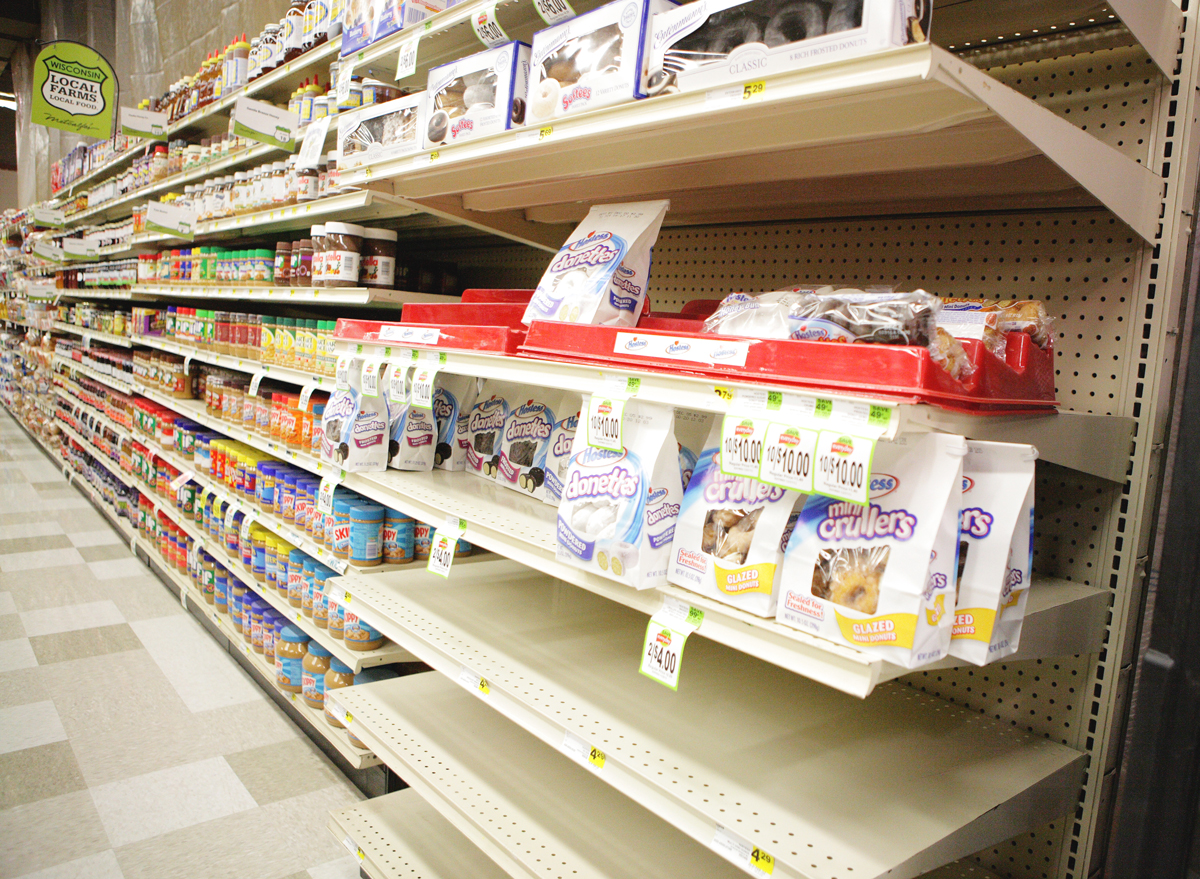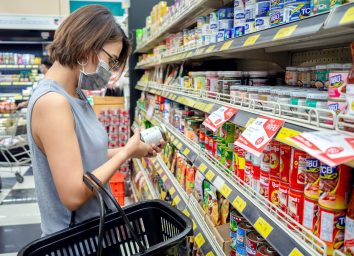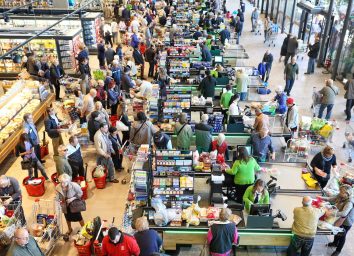The Single Biggest Change to Grocery Store Shelves You Can Expect

If you shopped for groceries at the onset of the coronavirus pandemic, you likely experienced the panic-buying that left grocery shelves ravaged and forced stores to implement buying limits. While that stressful time is behind us, apparently this isn't the last we'll see of sparse grocery store shelves. One of the major changes we can expect to linger after the pandemic is that the number of products on grocery store shelves will be drastically reduced.
Your typical supermarket stocks about 42,000 different items, according to the Chicago Sun Times; however, that number will plummet in the coming months—and can potentially become a permanent change.
Phil Lempert, founder of SupermarketGuru.com and a 30-year veteran analyst of grocery shopping trends, shared his predictions with the Times forecasting why and how this reduction will happen. Lempert said that there wouldn't be a need to keep shelves stocked as much as they currently are because there won't be a demand for last-minute shopping.
In order to reduce time in-store where you'd be putting yourself at risk of contracting the virus, future grocery shopping experiences will incorporate more pre-planned online ordering. Lempert envisions this being a hybrid shopping experience.
Shoppers would go online to order pickup for pantry essentials such as condiments, breakfast cereal, and canned goods. Then, they would only go to the store for produce, meat, and other fresh items. Lempert envisions robotics gathering the products from online lists from a back warehouse. When the shopper is ready to check out their fresh items, the cashier would add the goods ordered online.
STAY INFORMED: Sign up for our newsletter to get the latest food news delivered directly to your inbox.
Alternatively, store shelves may be emptier because shoppers will start to place more food orders online. Prior to the pandemic, only 3% of grocery spending in the U.S. was online. CNBC reports that Bain & Company consultants found that number to climb to 15% over the past few months. While Bain expects that surge to level out to between 10% to 15% of total grocery sales, a Nielsen study projected that online grocery sales would make up as much as 20% of total grocery retail by 2025.
The rise of online grocery services like Thrive Market will also be a driving force of reduced product availability at brick and mortar grocery stores. Thrive Market delivers high-quality, organic foods across the country—including to those in hard-to-reach food deserts and smaller markets—for 25% to 50% off the standard retail price you buy in the grocery store. With cost savings like that, it's hard to imagine shoppers would be shopping for all their necessities at grocery stores—especially given the convenience of having shelf-stable items delivered straight to your door. (Thrive Market is just one of the 8 Grocery Delivery Services You Never Knew About.)
Although grocery shelves may be barer in the future, at least you can take comfort in knowing that it has nothing to do with food shortages. The same cannot be said of the 5 Foods Going Extinct Shockingly Soon.







